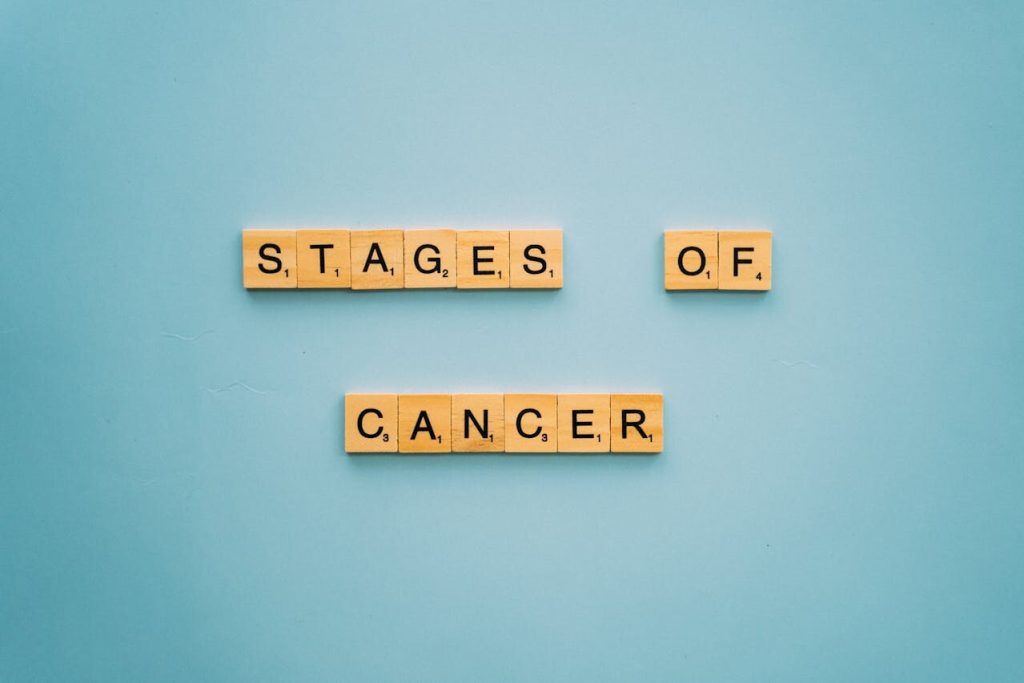Taxol, also known as paclitaxel, is a chemotherapy drug commonly used to treat various cancers, including breast, ovarian, and lung cancer. While Taxol has been effective in killing cancer cells, one of its most common side effects is bone pain.
Researchers are still working to uncover the mechanism behind why Taxol causes bone pain. However, it is thought to be related to the way Taxol affects the cells and their ability to divide.
Understanding the mechanism behind Taxol-induced bone pain is crucial in developing effective management strategies that can alleviate this side effect and improve the quality of life for cancer patients.
Key Takeaways:
- Taxol, a chemotherapy drug used to treat various cancers, can cause bone pain as a side effect.
- Researchers are still working to uncover the mechanism behind Taxol-induced bone pain.
- Understanding the underlying mechanisms is crucial for developing effective management strategies to alleviate this side effect.
Understanding Taxol’s Mode of Action
Taxol, also known as paclitaxel, is a chemotherapy medication that has been widely used to treat various types of cancer since its approval in 1992 by the U.S. Food and Drug Administration (FDA). Taxol is known to be effective in stopping the growth of cancer cells by disrupting the normal function of microtubules, which are structures that help the cell divide and form the necessary components for new cells. Specifically, Taxol binds to the microtubules and stabilizes them, preventing them from breaking down and disrupting the cell division process.
However, the use of Taxol can also lead to several side effects, including bone pain, which can significantly impact the quality of life of cancer patients. To understand why Taxol causes bone pain, it is essential to explore the relationship between Taxol and the cells in bone tissue.
The Connection between Taxol and Bone Pain
Research has shown a clear association between Taxol and bone pain, with some cancer patients experiencing this side effect during treatment. However, the exact mechanism behind this phenomenon remains unclear.
In one study published in the Journal of Clinical Oncology, researchers found that Taxol-induced bone pain was associated with a decrease in bone density and changes in bone structure. These changes were likely caused by Taxol’s effects on cell division in the bone marrow, leading to a reduction in bone-forming cells and an increase in bone-destroying cells. This process ultimately weakens the bones and can result in pain and fractures.
However, not all patients experience bone pain as a side effect of Taxol treatment. According to a 2019 review published in the Journal of Pain Research, genetic factors may play a role in individual susceptibility to Taxol-induced pain. Additionally, certain factors such as age, pre-existing pain conditions, and other medications being taken may affect the likelihood and severity of bone pain.
The Importance of Personalized Care
Given the complex nature of Taxol-induced bone pain, it is essential for healthcare providers to take an individualized approach to treatment. This may involve assessing a patient’s risk factors and adjusting their treatment plan accordingly, as well as providing targeted interventions to manage pain and prevent further bone damage.
The Cancer Center for Healing, located in Irvine, CA, offers a comprehensive approach to cancer care that is tailored to each patient’s unique needs. Under the guidance of Dr. Leigh Erin Connealy, the center provides a range of holistic treatment options and supportive services aimed at promoting healing and wellness throughout the cancer journey.
Mechanism of Taxol-Induced Bone Pain
Taxol is a chemotherapeutic drug used to treat various types of cancer, including breast cancer, ovarian cancer, and lung cancer. While it has proven effective in killing cancer cells, it is also known to cause several side effects, including bone pain.
The specific mechanisms through which Taxol induces bone pain are not fully understood. However, studies have suggested that neurotoxicity and inflammation may play a role.
Taxol can cause damage to nerve cells, leading to neuropathy, a condition that affects the peripheral nerves and can cause pain, tingling, and numbness. In addition, Taxol can trigger an inflammatory response, leading to the release of cytokines, which are small proteins that can cause pain and inflammation in the body.
The interaction between neurotoxicity and inflammation may contribute to the development of Taxol-induced bone pain.
Neuropathy and Taxol-Induced Bone Pain
Neuropathy is a common side effect of Taxol treatment, affecting up to 60% of patients. It is believed to be caused by the drug’s effect on nerve cells, leading to damage or dysfunction.
Studies have suggested that there may be a link between neuropathy and bone pain in patients treated with Taxol. Damage to the sensory nerves that supply the bones may result in pain and discomfort, particularly during weight-bearing activities.
In addition, Taxol can cause changes in bone density, which may also contribute to the development of bone pain.
Inflammation and Taxol-Induced Bone Pain
Taxol can trigger an inflammatory response in the body, which may contribute to the development of bone pain. When the body detects an injury or infection, it releases cytokines, which are small proteins that act as chemical messengers, stimulating an immune response.
In cancer treatment, inflammation can occur as a side effect of chemotherapy or radiation therapy, and can result in pain and discomfort in the bones.
The role of inflammation in Taxol-induced bone pain is not fully understood, but it is believed that the release of cytokines may contribute to the pain and discomfort experienced by some patients.
Managing Taxol-Induced Bone Pain
Taxol is a chemotherapy drug commonly used to treat various cancers such as breast, lung, and ovarian cancer. However, it is known to cause bone pain as a side effect which can be debilitating and distressing for patients undergoing treatment. There are several strategies available to manage Taxol-induced bone pain, including both pharmacological and non-pharmacological interventions.
Pharmacological Interventions
Pharmacological interventions involve the use of medications to manage pain. Analgesics such as nonsteroidal anti-inflammatory drugs (NSAIDs) and opioids can help relieve pain and inflammation caused by Taxol. Certain antidepressants and anticonvulsants can also be effective in managing neuropathic pain, a type of pain that is caused by damage to the nervous system. These medications can be prescribed by healthcare providers based on individual needs and medical history.
Non-Pharmacological Interventions
Non-pharmacological interventions may include complementary therapies such as acupuncture, massage, and yoga. These therapies aim to improve physical and emotional well-being and can help reduce pain and stress associated with Taxol-induced bone pain. In addition, lifestyle modifications such as exercise, a healthy diet, and proper sleep can also be useful in managing pain and promoting overall wellness.
It is important to note that every individual’s pain experience is unique, and the best course of treatment may vary from person to person. Therefore, it is essential to work closely with a healthcare provider to develop an effective management plan that meets the patient’s specific needs.
Holistic Approach at the Cancer Center for Healing
The Cancer Center for Healing, located in Irvine, CA, offers comprehensive and holistic cancer care under the guidance of Dr. Leigh Erin Connealy. Their approach to cancer treatment focuses on addressing the physical, emotional, and spiritual needs of each individual patient.
At the Cancer Center for Healing, patients receive personalized care plans that are tailored to their unique needs and preferences. The healthcare professionals at the center use a variety of treatment modalities, including conventional and alternative therapies, to help patients achieve optimal health and well-being.
A Comprehensive Approach to Cancer Care
The Cancer Center for Healing offers a comprehensive approach to cancer care, which emphasizes the importance of treating the whole person, not just the disease. Their integrative cancer treatment model blends the best of conventional medicine with complementary and alternative therapies, such as acupuncture, massage therapy, and nutritional counseling.
At the Cancer Center for Healing, patients receive individualized care plans that are designed to address their unique needs and preferences. This personalized approach allows for greater effectiveness, as patients are more likely to adhere to their treatment plan when it aligns with their values and lifestyles.
A Holistic Approach
In addition to addressing physical symptoms, the Cancer Center for Healing recognizes the importance of treating the emotional and spiritual aspects of cancer care. Their team of healthcare professionals includes psychologists and counselors who provide emotional support and guidance to patients and their families.
The Cancer Center for Healing believes that creating a supportive environment is essential for healing and recovery. Their cancer support services include individual and group counseling, yoga and meditation classes, and support groups for patients and caregivers.
Treating Taxol-Related Bone Pain at the Cancer Center for Healing
At the Cancer Center for Healing, a variety of treatment options are available for managing Taxol-induced bone pain. Their holistic approach to pain management recognizes that every patient has unique needs and preferences. Their healthcare professionals work with patients to create a personalized care plan that addresses their specific symptoms and concerns.
Pharmacological interventions may include pain relievers, such as nonsteroidal anti-inflammatory drugs (NSAIDs) or opioids. However, the Cancer Center for Healing also offers non-pharmacological approaches to pain management. These may include acupuncture, massage therapy, and mind-body techniques.
Acupuncture
Acupuncture is a form of Traditional Chinese Medicine that involves the insertion of fine needles into specific points on the body. It is believed to stimulate the body’s natural healing processes and promote pain relief. Acupuncture may be particularly helpful for individuals experiencing neuropathic pain, such as that associated with Taxol-induced bone pain. The Cancer Center for Healing offers acupuncture services to support patients in managing their pain and promoting overall well-being.
Massage Therapy
Massage therapy is a hands-on technique that involves the manipulation of soft tissues in the body. It may help reduce muscle tension, improve circulation, and alleviate pain. Massage therapy can be an effective way to manage Taxol-induced bone pain. The Cancer Center for Healing offers massage therapy services tailored to meet patients’ individual needs and preferences.
Mind-Body Techniques
Mind-body techniques, such as meditation, yoga, and guided imagery, can be powerful tools for managing pain and promoting relaxation. These techniques may help individuals cope with Taxol-induced bone pain by reducing stress and improving overall well-being. The Cancer Center for Healing offers a variety of mind-body services to support patients in managing their pain and improving their quality of life.
By taking a personalized, holistic approach to pain management, the Cancer Center for Healing can help individuals effectively manage Taxol-induced bone pain. Their healthcare professionals are dedicated to working with patients to find the most effective and comfortable treatment options for their unique needs.
Alleviating Taxol-Related Bone Pain
While conventional pain management strategies can be effective in treating Taxol-induced bone pain, some individuals may prefer natural remedies or complementary therapies that can provide relief without side effects. The following options may be worth exploring:
- Acupuncture: This ancient Chinese medicine technique involves inserting thin needles at specific points on the body to promote healing and alleviate pain. Some studies have shown acupuncture to be effective in reducing chemotherapy-related pain.
- Massage: Gentle massage can help relax muscles, reduce tension, and improve blood flow, which can relieve pain and promote healing. Some massage therapists specialize in working with cancer patients and can tailor their techniques to address specific needs.
- Herbal remedies: Some herbs, such as turmeric, ginger, and devil’s claw, have anti-inflammatory properties that can help reduce pain and swelling. However, it’s important to talk to your healthcare provider before using any herbal or dietary supplements, as they can interact with medications and affect treatment outcomes.
- Mind-body techniques: Practices such as meditation, yoga, and deep breathing can help calm the mind and reduce stress, which can in turn relieve pain and improve overall well-being. Many cancer centers offer classes and resources on these techniques.
It’s important to note that natural remedies and complementary therapies should never be used as a substitute for medical treatment, and should always be discussed with your healthcare provider first. Integrating these modalities into a holistic pain management plan can help optimize treatment outcomes and improve quality of life.
Coping Strategies for Taxol-Induced Bone Pain
Experiencing bone pain can be a distressing side effect of Taxol treatment. While there is no guaranteed way to prevent this, there are coping strategies that can help manage the pain and discomfort. It is important to remember that what works for one person may not work for another, so a trial-and-error approach may be necessary to find the most effective strategies for managing Taxol-induced bone pain.
1. Practice self-care
Self-care can take many forms and may involve finding ways to relax, remain calm, and reduce stress levels. Engaging in activities such as meditation, yoga, or deep breathing exercises can help manage pain and promote relaxation. Soaking in a warm bath or applying a warm compress to the affected area may also provide some relief. It is crucial to prioritize self-care during this challenging time.
2. Make modifications to your lifestyle
Simple modifications to your lifestyle can go a long way in reducing bone pain. This may include avoiding strenuous physical activity that can exacerbate discomfort. Alternatively, engaging in low-impact exercise, such as swimming or walking, can help reduce pain levels and promote overall health. It may also be helpful to adjust sleeping positions to reduce pressure on the affected areas.
3. Seek support from friends and family
It is vital to have a support system in place when dealing with Taxol-related bone pain. Friends and family can provide emotional support and practical assistance with everyday tasks, easing the burden of managing the pain. Talking to others who have had similar experiences may also provide insight and comfort in coping with pain.
4. Consider complementary therapies
Many individuals find that complementary therapies, such as acupuncture, massage, or herbal remedies, can help alleviate bone pain. It is important to discuss any complementary therapies with your healthcare provider to ensure they do not interfere with your Taxol treatment or other medications.
5. Use medication as prescribed
Your healthcare provider may prescribe medication to manage Taxol-induced bone pain. It is essential to use the medication as directed and report any adverse effects or concerns promptly. Over-the-counter pain relievers, such as acetaminophen or ibuprofen, may also provide some relief, but it is important to discuss these options with your healthcare provider before use.
6. Keep an open line of communication with your healthcare provider
Keeping your healthcare provider informed of your pain levels and symptoms is crucial for effective management of Taxol-induced bone pain. Your healthcare provider can work with you to adjust your treatment plan and provide other interventions that may help manage the pain and improve overall quality of life.
Prevention of Taxol-Related Bone Pain
While it may not be possible to completely prevent Taxol-induced bone pain, there are measures that patients can take to minimize its occurrence and severity.
One approach is to use lower doses of Taxol, as higher doses are more likely to cause bone pain. However, this may not always be feasible as the dosage is often determined by the stage and type of cancer being treated.
Another strategy is to incorporate regular exercise into the daily routine, as physical activity has been shown to reduce the risk of bone pain and other chemotherapy-related side effects. Additionally, maintaining a healthy diet and staying hydrated can help prevent bone pain and other adverse effects of chemotherapy.
It is also important to have open communication with healthcare providers about any symptoms or concerns, as early intervention can help prevent bone pain from becoming more severe or chronic. Patients can work with their healthcare team to develop a proactive management plan that includes pharmacological and non-pharmacological interventions.
The Importance of Open Communication with Healthcare Providers
Effective communication between patients and their healthcare providers is crucial in managing Taxol-induced bone pain. Patients should report their symptoms promptly and provide their healthcare team with as much information as possible to help find appropriate interventions. It’s important to be honest and open about any concerns or fears related to bone pain or other chemotherapy side effects.
Healthcare providers can offer guidance on managing symptoms, provide recommendations for pain management, and refer patients to specialists if necessary. They can also work with patients to develop a personalized care plan that takes into account their specific needs and preferences. By working together and maintaining open communication, patients and their healthcare providers can effectively manage Taxol-induced bone pain and improve overall outcomes.
The Personalized Approach to Cancer Care at the Cancer Center for Healing
The Cancer Center for Healing, located in Irvine, CA, is committed to providing personalized care to each patient. Dr. Leigh Erin Connealy and her team of healthcare professionals understand that no two individuals are alike, and therefore, no single treatment plan can address the diverse needs and preferences of cancer patients.
At the Cancer Center for Healing, patients receive individualized care plans that are tailored to their unique medical history, lifestyle, and goals. The center offers a wide range of treatment modalities, including both conventional and integrative approaches, to address all types of cancer.
The Role of Supportive Services in Cancer Treatment
Managing Taxol-induced bone pain can be a challenging aspect of cancer treatment. While medical interventions may provide relief, patients often require additional support to cope with the physical and emotional toll of this side effect. The Cancer Center for Healing offers a range of supportive services to help individuals manage Taxol-related bone pain and other chemotherapy side effects.
Emotional and Psychological Support
Living with cancer can be a stressful and emotional experience, and Taxol-induced bone pain can exacerbate these feelings. That’s why the Cancer Center for Healing offers a variety of emotional and psychological support services to help patients manage the mental and emotional impact of cancer. This may include counseling, support groups, and mind-body therapies, such as meditation and yoga.
Nutritional Support
Diet plays an essential role in cancer treatment and can impact the severity of chemotherapy side effects, including bone pain. At the Cancer Center for Healing, patients have access to expert nutritionists who can help develop personalized meal plans to support their overall health and well-being. They can also recommend supplements and other natural remedies to help alleviate pain and inflammation.
Complementary Therapies
In addition to traditional medical interventions, complementary therapies can also provide relief for Taxol-induced bone pain. The Cancer Center for Healing offers a range of holistic treatments, including acupuncture, massage, and herbal remedies, which can help reduce pain and inflammation and improve overall well-being.
By addressing the physical, emotional, and spiritual aspects of cancer treatment, supportive services can help patients manage Taxol-induced bone pain and improve their quality of life.
Schedule a Consultation at the Cancer Center for Healing
If you or a loved one is experiencing Taxol-induced bone pain, the Cancer Center for Healing offers personalized and holistic cancer care. Their team of healthcare professionals, led by Dr. Leigh Erin Connealy, is dedicated to addressing all aspects of cancer treatment and providing comprehensive support.
To schedule a consultation at the Cancer Center for Healing, individuals can call (949) 680-1880 or visit their website for more information. The center offers individualized care plans tailored to each patient’s specific needs and preferences, with a focus on integrative and natural therapies.
Conclusion
Taxol is a well-established cancer treatment that is associated with several side effects, including bone pain. Understanding the underlying mechanisms behind this side effect is critical for better managing it and improving the patient’s quality of life.
At the Cancer Center for Healing, patients can benefit from a personalized and holistic approach to cancer care. Their comprehensive treatment modalities, including integrative and natural therapies, can help alleviate Taxol-induced bone pain and manage other chemotherapy side effects.
Individuals experiencing Taxol-related bone pain can benefit from proactive management, early intervention, and open communication with their healthcare providers. With the right strategies in place, patients can better cope with this side effect and improve their overall cancer treatment experience.
FAQ
Q: Why does Taxol cause bone pain?
A: Taxol can cause bone pain as a side effect of its mechanism of action as a cancer treatment.
Q: What is Taxol’s mode of action?
A: Taxol works by affecting the cells’ ability to divide, which can lead to bone pain.
Q: Is there a connection between Taxol and bone pain?
A: Yes, scientific evidence supports the relationship between Taxol and bone pain.
Q: How does Taxol induce bone pain?
A: Taxol-induced bone pain may be attributed to neurotoxicity and inflammation.
Q: What are the strategies for managing Taxol-induced bone pain?
A: Both pharmacological and non-pharmacological interventions can provide relief for Taxol-induced bone pain.
Q: What is the holistic approach at the Cancer Center for Healing?
A: The Cancer Center for Healing offers comprehensive treatment modalities under the guidance of Dr. Leigh Erin Connealy.
Q: How does the Cancer Center for Healing provide comprehensive cancer care?
A: The Cancer Center for Healing addresses the physical, emotional, and spiritual aspects of cancer treatment.
Q: How does the Cancer Center for Healing treat Taxol-related bone pain?
A: The Cancer Center for Healing offers holistic pain management strategies and expertise in managing Taxol-related bone pain.
Q: Are there natural remedies to alleviate Taxol-related bone pain?
A: Yes, natural remedies and complementary therapies can help alleviate Taxol-related bone pain.
Q: What coping strategies are available for Taxol-induced bone pain?
A: Practical tips and coping strategies can help individuals manage Taxol-induced bone pain.
Q: Can Taxol-related bone pain be prevented?
A: Minimizing the incidence and severity of Taxol-related bone pain can be achieved through preventive measures and proactive management.
Q: How important is open communication with healthcare providers regarding bone pain?
A: Open communication is vital in reporting symptoms promptly and finding effective solutions for Taxol-related bone pain.
Q: How does the Cancer Center for Healing provide personalized cancer care?
A: The Cancer Center for Healing tailors treatment plans to address specific needs and preferences of each patient.
Q: What is the role of supportive services in cancer treatment?
A: Supportive services, including emotional and psychological support, play an important role in cancer treatment.
Q: How can I schedule a consultation at the Cancer Center for Healing?
A: To schedule a consultation at the Cancer Center for Healing, please contact us at (949) 680-1880.






